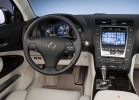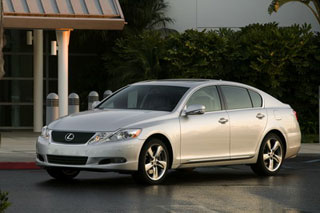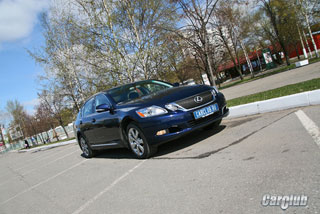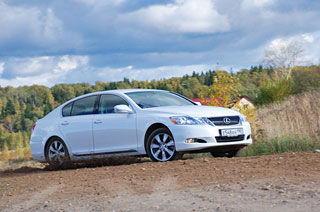Lexus GS test drive since 2008 sedan
Image costs
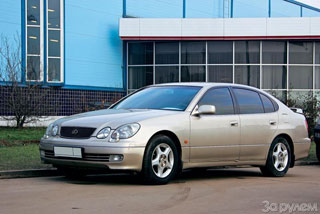 For many, Lexus is not just a brand, but a standard of reliability, an icon of the automobile world. But he is not without flaw, says Igor Kozlov. Photo: Konstantin Yakubov.
For many, Lexus is not just a brand, but a standard of reliability, an icon of the automobile world. But he is not without flaw, says Igor Kozlov. Photo: Konstantin Yakubov. The second -generation GS model, which will be discussed, for six years was a winner of the American Reliability Reliability Reliability Reliability Center J.D. Power. It is curious to calculate how much the content of the prize horse will cost. But first you need to spend money on its purchase
Price - by status
For the GS300 of 2001 (model 160 code) now they ask for from 570 thousand rubles, for restyled cars - 590-680 thousand, and GS430 (model 161 code) costs about 673 thousand rubles. (for January 2008). It is a little expensive, but in comparison with German classmates it is quite acceptable. Moreover, Lexus, even in the basic configuration, is equipped with a very richly - from a helpful extending steering column that facilitates the landing and leaps, to the music acoustics of the native audio center Nakamichi.
True, its sound sometimes spoils the unpleasant creak of the instrument panel - many owners complain of this, but there are also satisfied owners of quiet specimens. But when trying to diagonal hanging, Lexus really cries with panels, but there is no talk of noticeable distortions, and even more so the doors shaken. This indirectly indicates sufficient rigidity of the power cell of the cabin and promises good protection in the collision.
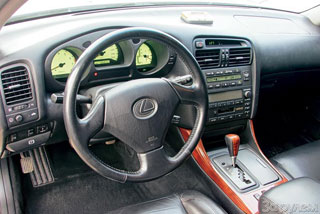 SELECTION BIAS
SELECTION BIAS According to the usual EURONCAP Crash test, the model was never tested: after all, the share of second-generation GS sales in Europe, even in successful years, did not exceed 7%. Most of the car settled in the American market, and already behind the ocean, a meeting with a cube could not be avoided. The Road Safety Institute (IIHS) noted the highest assessment of the riders - G. They spoiled the idyll only increased loads on the right leg and foot of the driver - rating A (for position worse). In addition, the mannequin during the rebound breathed his head on the longitudinal beam of the roof, but the probability of a concussion of the brain was small.
There is only one headache with the body in full -time operation - regular washing, and not only for the sake of an external gloss. From the chemistrates with which our roads are watered in winter, corrosion on the lower door selection may appear for the fifth to sixth season - it is important to keep them clean. At the same time, it is useful to cover the lower door seals with silicone lubricant, so as not to froze to the threshold and therefore do not tear. These places are like an indicator of care: when choosing a used car, we examine them in the first place. But you can not pay attention to small chips on the hood, for the elderly GS, the horseback is almost the norm, as well as the sourness of the lower knee of the telescopic antenna on the rear wing.
Cars from America sometimes look more well -groomed, but the appearance, as you know, is deceiving. Often they leave their homeland due to various road (and natural) troubles and come to us after a serious repair, which is sometimes difficult to identify traces. It is better not to skimp on dealer diagnostics, no matter how much it is, it is difficult to check the bottom and condition of the units under it without a lift - the road clearance is small.
From below, sometimes a plastic aerodynamic body kit is missing - it is often lost on bumps. With runs over 100-120 thousand km, the rear oil seal often swears. As a rule, before a plentiful leak, it will last another 20-30 thousand km, but you still have to change the cuff. At the same time, it can be difficult to disconnect the tubes of the automatic hydraulics - they fuse with the fittings from corrosion. Therefore, without waiting for the repair, we recommend cleaning and processing the connection with anticorus (the main thing is to replace the dirt in the gap between the tube and the nut).
Otherwise, the automatic transmission is quite reliable. The dealers do not recall serious breakdowns, but you should not bring to them - at least 80 thousand km we change the oil. With an aggressive driving manner, it can darken, smell a burn and demand an earlier replacement, which we recommend that we recommend with recirculation (dealers use a special installation for this). The complete replacement of the useful for cars, whose mileage is in doubt, or Americans - their oil is often not the first freshness.
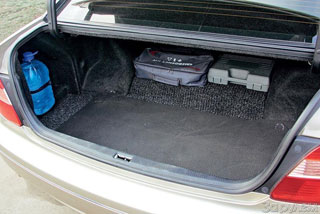 That in a row, that fan
That in a row, that fan Motors are generally very reliable. All mechanical breakdowns occurred due to illiterate replacement of the timing belt. It is important here not only to catch the marks on the pulleys, but also to correctly install the VVTI coupling on the distribution of the VVTi, which changes the phase of the gas distribution. Such a crucial work should not trust anyone, especially since it is required infrequently: on 2JZ-GE engines (in-line six)-after 100 thousand km, and 1UZ-FE and 3UZ-FE (V8, 4.0 and 4, 4.0 and 4, 3 l, respectively) - after 150 thousand. True, recently, the replacement period was equalized - 100 thousand km (in accordance with the new service menu for Russia), explaining the decrease in the interval for the V8 with more difficult operating conditions. We advise you to adopt the innovation as a law: after all, the breaks of the belt are fraught with expensive repairs.
The engine radiator does not live with us for a long time, its plastic tanks crack, although this defect can not be called massive. By the way, Lexus is not alone in this. Many other cars happen the same problems that we wrote about in previous materials of the heading. The mutation of plastic, according to all dealers, is caused by anti -headed reagents, and alas, alas, no one has come up with a universal antidote. One thing remains - to monitor the temperature regime of the engine!
But our fuel as a whole had the motors to taste, unless, of course, you will run into a clear poison with an overabundance of metal -containing additives that kill candles. It's a shame when a fresh kit begins to spare after 10-15 thousand km, because changing it is not easy. To get to the candles of the central cylinders of the six, it is necessary to remove part of the intake path. On the V8, although it looks easier, but candles are more expensive, because they are a couple more. Pull the replacement to the set 40 thousand km (if you are lucky - up to 50-60), if you go around the dubious gas stations. At the same time, the chance to save the nozzles from dinner increases. However, their flushing is required infrequently - on average after 60-80 thousand km.
There are almost no other problems with motors, except for 200 thousand km, sometimes the clip of the clinic belt tensioner begins to howl, which can be changed separately.
The fight against weight
But the silent blocks of the rear suspension do not sell separately - only assembly with levers. The deadline for replacing them greatly depends on the loads; If you neglect the instructions, be prepared to fork out into the lower levers after 100 thousand km, and the upper balls (they also go assembled with levers) - after 70-80 thousand. In case of gentle operation, all elements of multi-link serve 160-180 thousand km or more. Conventionally weaknesses are the bearings of the hubs, which can walk after 60 thousand km, and the bushings of the reptile stability stabilizer, the knock of which is possible to 30 thousand km, but more often they reach 40-50 thousand. The same amount of their analogues in the front suspension serve, for which other breakdowns are rare, of course, if not abuse its capabilities.
The average service life of the front brake pads is 30 thousand km, the rear are 35-40 thousand. If you like to light, get ready to change them much more often, respectively, after 10-15 and 15-20 thousand. On average, discs are enough for three sets of pads, but earlier replacements occur, when with a war he does the residual thickness does not allow them to be protected.
There are no other problems with the brakes, but remember the peculiarity of pumping the system, for example, in the case of replacing the hose or liquid: due to the presence of ABS combined with the VSC (tract-control and electronic stabilization system), the rear circuit is pumped with the ignition and pressed pedal Brakes! Front - as usual, by gravity with an air under the brake tank.
As you can see, even a reliable model has weaknesses. However, there are so few problems that, perhaps, Lexus -GS in its class can be taken as a standard - although notable in the content.
The history of the model
1997 In January, at a car dealership in Detroit, Lexus presented the HPS concept car, which became second-generation GS in a couple of months (for the Japanese market, Toyota-Aristo). Body: Sedan, the factory index began with 16. Gasoline engines: P6, 3.0 liters, 168 kW/228 hp. or 161 kW/219 hp (compression degree of 10.5 and 10.0, respectively); V8, 4.0 l, 216 kW/294 hp The rear drive, A5.
1998. The P6 gasoline engine, 3.0 l, 163 kW/222 hp
1999 Crash Test of the American Road Safety Institute (IIHS): the highest assessment of G for a frontal blow.
2000. The V8.4.3 l gas engine, 208 kW/283 hp.
2001 Restyling: Radiator cladding with a changed pattern, rear lights with smooth (without diffuser) glass, aluminum rims around the devices, a brilliant emblem in the center of the steering wheel. Changes in the color scheme and texture of the upholstery of the salon. 2004 is a third -generation model.
Igor Kozlov
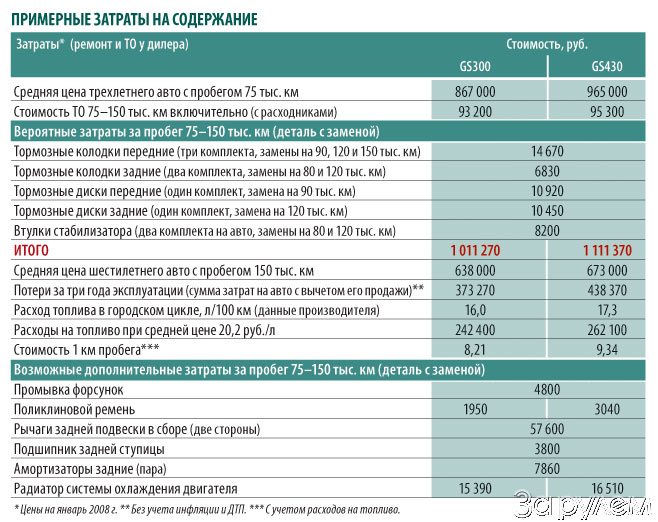
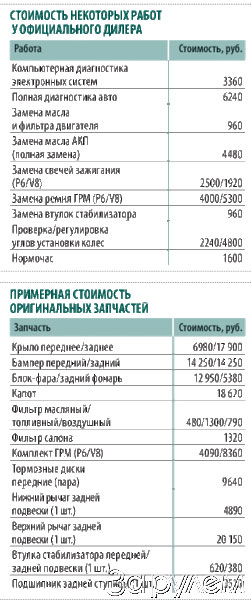
A source: The magazine "Driving"



